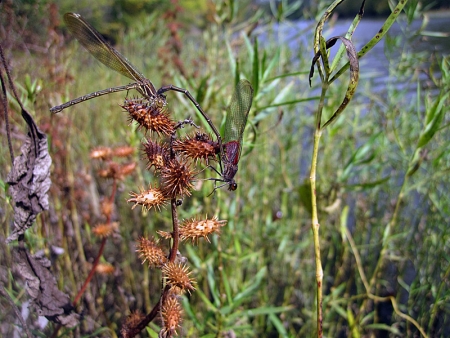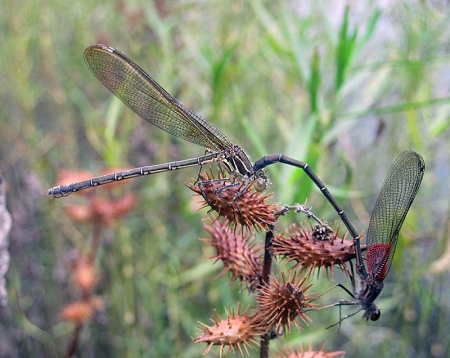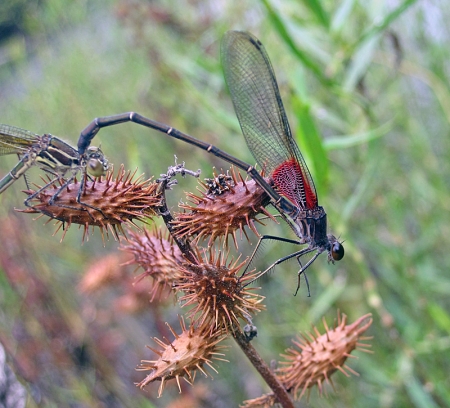Note: this is the first of two posts based on photos that I uploaded to the site last October, just before one of my extended absences from posting.
In my continued search for all things crayfish, last October found me on the Black River, at the Bradley Hammer Conservation Area just south of Williamsville. I was trying to determine how far upstream that Orconectes palmeri, the Gray-speckled Crayfish, ascends the Black River. I had found them as far upstream as the Hendrickson Access near the Wayne/Butler County line and Hammer CA is the next available access.
My crayfish search didn’t pan out very well. The weather was cold enough that I was relegated to using waders and the area of the river I was able to access was, um, less than optimum crayfish habitat. In short, I found exactly zero crayfish, leaving that particular question unanswered.
However, there’s almost always something interesting around when you’re at an area like this. And the thing that caught my eye this day was at the upper access, reached by negotiating a rather soft gravel road that made me extremely grateful for 4-wheel drive. The river runs across a shallow riffle here and I was able to wade all the way across to a small island near the far bank. The island, which I somehow manage to not photograph, was approximately 30’ x 50’ and separated from the north bank by a 20’ channel of water.
Two things about the island stood out. Interspersed with the water willow was a dense stand of cockleburs (Xanthium sp., probably X. strumarium) and a swarm of American Rubyspots, Hetaerina americana, who were single-mindedly trying to ensure the future population of the species.
Cocklebur is a summer broadleaf annual, and assuming it was X. strumarium, capable of reaching over six feet in height and occurring almost worldwide between latitude 53 degrees North (southern Canada) and 33 degrees south (southern tip of Africa). Widely considered a weed for it’s propensity to grow in crop fields, pastures and nurseries, it’s seeds and early growth are also poisonous. That the seeds are poisonous is not surprising — covered in sharp spines that will attach tenaciously to apparently anything short of solid steel (including neoprene waders, it turns out), the cocklebur’s dispersal strategy obviously does not include being eaten.
After reaching a certain stage of maturity, cocklebur loses it’s toxicity and actually becomes relatively nutritious though still unpalatable due to its rough texture. Interestingly, one study (Kufeld, 1973.) lists cocklebur as “highly valuable” as elk forage, so with the recent elk reintroduction we can probably count on the Dept. of Conservation seeding it from the air, much like they used to air drop rattlesnakes obtained through trades for wild turkeys. ![]()
There were, I’m guessing, around 50 or so Redspots and many of them were “in tandem” like the pair in the photo. I didn’t get to witness any of them actually hooking up, but when each pair was finished, the female wasted little time heading to the water’s edge to oviposit among the water willow roots. The male usually followed and seemed to be acting defensively.
Both the male and female have the vivid emerald abdomens though only the male has the brilliant red on the thorax and wing. These photos do not do justice to the spectacular colors of a Rubyspot. The sun was hiding and I’d been to timid to bring the D90 on the trek across the river. I wasn’t willing to risk falling or dropping it in the water, so it stayed in the truck. And so all the photos were shot with the D10, my “underwater” camera, whose image quality falls far below that of the D90.
Next up: one more set of photos from last fall and then back to birds and probably crayfish.
References:
Kufeld, Roland C. 1973. Foods eaten by the Rocky Mountain elk. Journal of Range Management. 26(2): 106-113.


